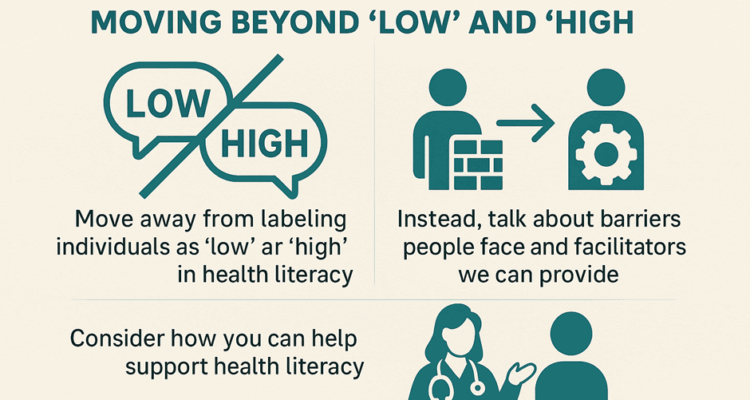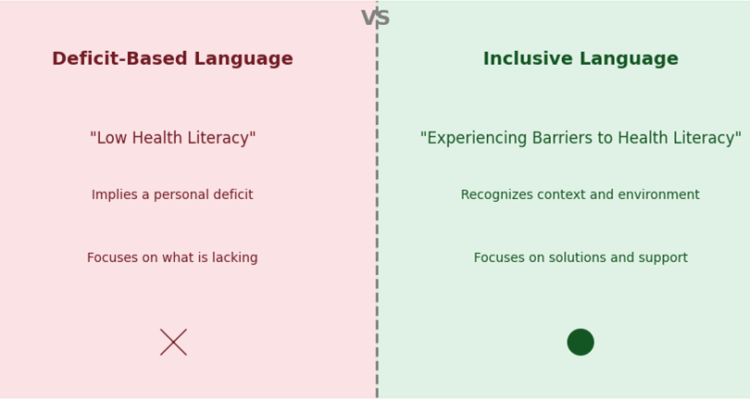Rethinking Health Literacy: Moving Beyond “Low” and “High”
Health literacy is often described in binary terms: “low” or “high”, “limited” or “adequate.” While these labels may seem intuitive, they can oversimplify a complex and dynamic concept. It also risks placing the burden of health literacy on individuals, rather than prompting healthcare services, systems and professionals to reflect on how they can support health literacy more effectively.

What is health literacy?
There are many definitions and conceptualisations of health literacy, but most age that at the core of health literacy is the ability to:
- Access health information
- Understand health information
- Appraise health information
- Apply (use) the information to achieve health and wellbeing goals.
There are many individual and environmental barrier and facilitators impacting each of these steps at any given time and across contexts.
Why Language Matters
Describing someone as having “low health literacy” can imply a fixed personal deficit. It overlooks the contextual factors that also influence a person’s ability to access, understand, and use health information. These factors include:
- The clarity and accessibility of the information provided
- The communication skills of healthcare professionals
- The complexity of the healthcare system
- Cultural, linguistic, and cognitive diversity
- Emotional and physical states during healthcare encounters
Instead of labelling individuals, we can shift the focus to the environment and interactions that shape health service experiences.
Connecting to Allied Health Reports
Allied health professionals often write reports that are intended for a range of audiences; not just other clinicians, but also patients, families, carers, and funding bodies. These reports can either support or hinder health literacy depending on how they are written and shared.
I recently presented at the National Speech Pathology Australia Conference about my research into the accessibility and health literacy implications of allied health reports, especially for people with lifelong communication disability. My research has explored the experiences of allied health professionals writing reports, and highlights the ways that allied health reports can support health literacy. You can view a copy of the presentation slides here: https://www.harmonyturnbull.org/2025/06/14/speech-pathology-australia-conference-2025-presentation-slides/
A More Inclusive Approach
Rather than saying someone has “low health literacy,” consider describing the situation in terms of barriers and facilitators. For example:
“The person is experiencing barriers to health literacy due to unfamiliar terminology and rushed consultations.”
“We can facilitate health literacy by using plain language and visual aids.”
This language acknowledges that health literacy is not just an individual trait. It’s a shared responsibility. It also opens the door to practical solutions.
What Healthcare Providers Can Do
Healthcare professionals play a crucial role in supporting health literacy. Here are a few ways to foster more inclusive and empowering communication:
Ask how best to present information: Do what works to support the person to understand.
Check for understanding: Use teach-back methods to confirm comprehension.
Use plain communication: Avoid jargon and use language the person understands.
Create supportive environments: Normalise a culture of asking for clarification and checking understanding.
Be culturally responsive: Adjust communication to diverse needs and preferences.
A Call to Action
Let’s move away from labelling individuals as “low” or “high” in health literacy. Instead, let’s talk about barriers people face and facilitators we can provide. By doing so, we shift the narrative from blame to empowerment, and from deficit to opportunity.
Health literacy is not just about what people know. It’s about how we talk and write, how we interact, how we design and deliver services, and how we support each other.
